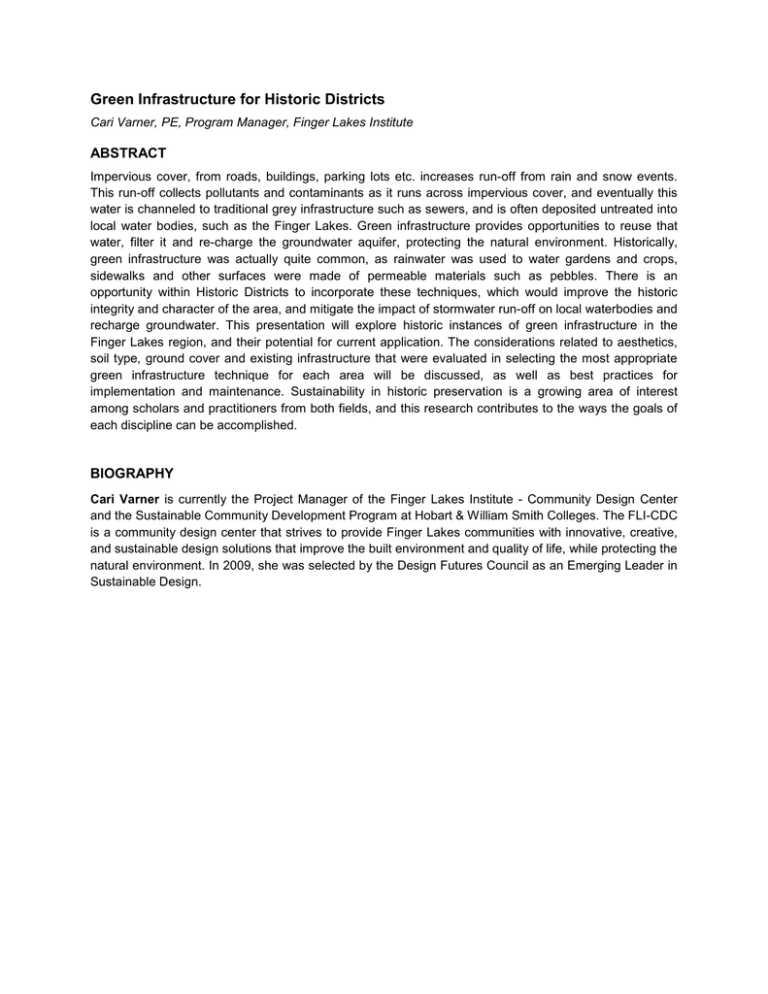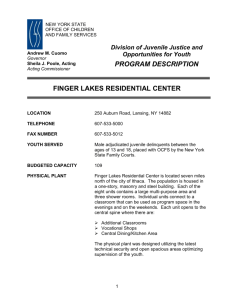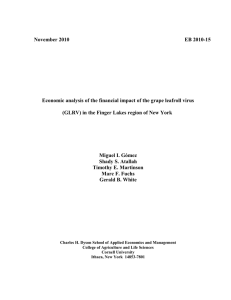Green Infrastructure for Historic Districts ABSTRACT
advertisement

Green Infrastructure for Historic Districts Cari Varner, PE, Program Manager, Finger Lakes Institute ABSTRACT Impervious cover, from roads, buildings, parking lots etc. increases run-off from rain and snow events. This run-off collects pollutants and contaminants as it runs across impervious cover, and eventually this water is channeled to traditional grey infrastructure such as sewers, and is often deposited untreated into local water bodies, such as the Finger Lakes. Green infrastructure provides opportunities to reuse that water, filter it and re-charge the groundwater aquifer, protecting the natural environment. Historically, green infrastructure was actually quite common, as rainwater was used to water gardens and crops, sidewalks and other surfaces were made of permeable materials such as pebbles. There is an opportunity within Historic Districts to incorporate these techniques, which would improve the historic integrity and character of the area, and mitigate the impact of stormwater run-off on local waterbodies and recharge groundwater. This presentation will explore historic instances of green infrastructure in the Finger Lakes region, and their potential for current application. The considerations related to aesthetics, soil type, ground cover and existing infrastructure that were evaluated in selecting the most appropriate green infrastructure technique for each area will be discussed, as well as best practices for implementation and maintenance. Sustainability in historic preservation is a growing area of interest among scholars and practitioners from both fields, and this research contributes to the ways the goals of each discipline can be accomplished. BIOGRAPHY Cari Varner is currently the Project Manager of the Finger Lakes Institute - Community Design Center and the Sustainable Community Development Program at Hobart & William Smith Colleges. The FLI-CDC is a community design center that strives to provide Finger Lakes communities with innovative, creative, and sustainable design solutions that improve the built environment and quality of life, while protecting the natural environment. In 2009, she was selected by the Design Futures Council as an Emerging Leader in Sustainable Design.







